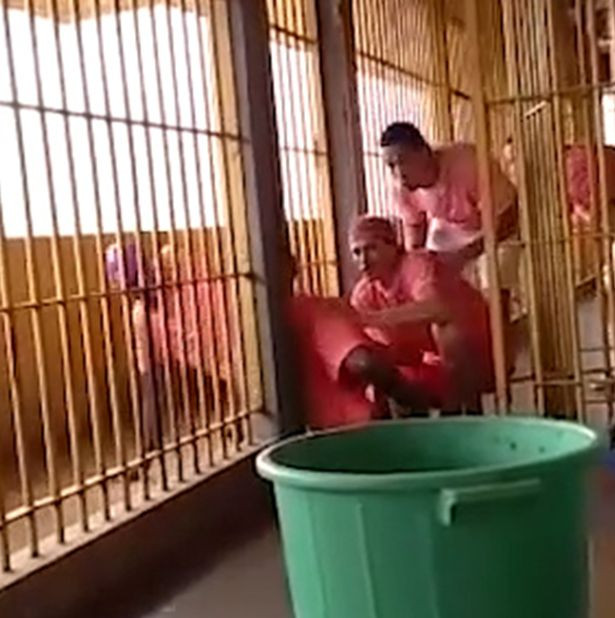Prisoners in Brazil squeeze through bars in daring daytime jailbreak
The escape was captured on a mobile phone by a fellow inmate at the Aparecida de Goiania Correctional Facility in Brazil.

Eleven convicts were caught on film prising open their bars and breaking out of a jail in Brazil's crisis-hit prison system.
The dramatic footage shows the inmates squeezing through a narrow gap at the base on a cell and then jumping over a low wall to freedom.
The daytime jailbreak was captured on a mobile phone by another prisoner at the Aparecida de Goiania Correctional Facility in Luiziania, in the country's central western highlands, on Saturday (7 January).
Most of the prisoners had stained their white uniforms with juice to resemble the pink outfits worn by prison staff in a bid to blend in once immediately outside the jail.
Brazil's Directorate General of Penitentiary Administration said one man injured himself jumping over the wall, and was soon recaptured.
The institution also said it would punish the convict who filmed the escape, reported globo.com.
But the prison body said that the remaining ten prisoners remain at large, and a search has begun for the men. The authorities have not said what crimes the prisoners were convicted of.
The escape comes after the Luiziania prison suffered three riots in a single week with nine inmates dead and 14 injured, earlier this month.
Brazil's prison system is dominated by violent rival favela drug gangs who fight with each other and prison guards to gain the upper hand in their jails.
Recently, at a prison in the nearby central western state of Goias, just under 100 inmates escaped after a devastating riot left nine convicts dead. All of them had been burned while two had been decapitated.
The surge of violence erupted on New Year's Day at the Complejo de Aparecida prison, the head of the state's prison service, Lieutenant Colonel Newton Castilho, told a news conference.
He said fighting broke out in "C-Block and invaded the other wings", with inmates stating a number of fires around the prison.
Castilho said: "There were wounded, bodies burned, and two decapitations," adding that the charred remains had to be identified through DNA testing and dental records.






















